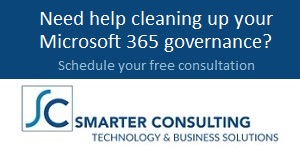From AI Strategy to Everyday Practice
I’ve been reading through a lot of the Microsoft adoption strategy for Copilot, as well as the documentation available from some of the larger consulting companies. Basically, anything that is available online. Clearly, AI has officially moved past the hype stage. Leaders aren’t debating whether it matters anymore—it’s here, and it’s already reshaping how work gets done. What separates the companies that are pulling ahead from those stuck in neutral isn’t the quality of their AI strategy—it’s their ability to make it real in everyday practice.
 I’ve been thinking about writing a series on the practical application of AI based on my own usage, of course, and from what I’ve experienced in conducting training workshops this past year. There is a lot of strategy guidance out there, but far less practical advice. People need working scenarios, tactical guidance—not the empty platitudes and quasi-technical fluff. This is the hard part. Bold strategies are easy to write. Turning them into daily habits, budget decisions, workflows, and team structures is where the real work happens. If you’re a leader looking to move from ambition to execution, here’s how to bridge that gap.
I’ve been thinking about writing a series on the practical application of AI based on my own usage, of course, and from what I’ve experienced in conducting training workshops this past year. There is a lot of strategy guidance out there, but far less practical advice. People need working scenarios, tactical guidance—not the empty platitudes and quasi-technical fluff. This is the hard part. Bold strategies are easy to write. Turning them into daily habits, budget decisions, workflows, and team structures is where the real work happens. If you’re a leader looking to move from ambition to execution, here’s how to bridge that gap.
Strategy vs. Practice
A strategy is a vision. Practice is what actually shows up on your team’s calendar tomorrow morning. Many companies are sitting on polished AI roadmaps but struggle to answer simple, practical questions:
- Who decides which workflows to automate first?
- Where does the budget come from?
- How do we build trust in new AI-driven processes?
- What skills do we expect employees to develop—and how fast?
Closing this gap starts with rethinking the fundamentals of how your company operates.
1. Change How Decisions Get Made
In the AI era, speed matters. The companies pulling ahead don’t just use AI to crunch numbers—they reorganize how decisions happen.
- From top-down to distributed. AI gives teams real-time insights, but if every decision still needs executive sign-off, you’re slowing down the system. Push decision rights closer to the work.
- From gut feel to evidence. AI models can’t replace human judgment, but they can surface patterns leaders would miss. The new standard is human-led, AI-informed decisions.
Practical step: Map out one major decision process in your org and ask, Where could AI improve the speed or quality of this decision? Then pilot that change.
2. Reallocate Budgets with Intention
AI isn’t free—and the smartest companies aren’t just throwing money at tools. They’re adjusting budgets in three key areas:
- Tools and platforms. Invest in AI platforms that integrate with your core workflows rather than standalone pilots that never scale.
- People. Budget for training, reskilling, and the new roles that emerge (AI product managers, prompt engineers, ethicists).
- Processes. Don’t underestimate the hidden costs of change management. Budget for redesigning workflows, not just buying software.
Practical step: Shift 5–10% of your existing operating budget into AI-related investment each quarter, tied to measurable outcomes.
3. Redesign Workflows Around Human + AI Collaboration
AI is not about replacing people—it’s about reshaping work. Companies making the leap are redesigning workflows to split tasks by strength:
- AI handles: data entry, summarization, analysis, pattern recognition.
- Humans handle: judgment calls, creativity, strategy, relationship building.
Practical step: Pick one core workflow. Break it down into tasks. Mark which tasks are ripe for AI handoff and which must stay human-led. Then rebuild the workflow accordingly.
4. Reorganize Teams for Speed
Traditional org charts are slow. AI-first orgs rethink how teams are structured:
- Cross-functional pods. Small teams with tech, business, and ops expertise work together to deliver AI projects quickly.
- Embedded AI experts. Instead of centralizing all AI talent, leaders embed experts into business units where the work happens.
- Governance without gridlock. Light but clear guidelines for AI use help teams move fast without constant escalations.
Practical step: Run a 90-day pilot with one cross-functional team tasked to redesign a process with AI. Use lessons learned as a model for scaling.
5. Build AI Fluency at Every Level
Finally, none of this sticks unless people at every level—leaders, managers, employees—become fluent in working with AI. Not experts. Fluent.
- Leaders need to ask better questions: Where will AI have the biggest impact? How do we measure ROI?
- Managers need to adapt workflows and coach their teams.
- Employees need to trust, question, and leverage AI tools in their daily work.
Practical step: Launch a learning sprint (2–4 weeks) focused on one skill: how to use AI to improve a core task in your team. Keep it narrow and practical.
Making It Real
Here’s the simplest way to move from AI strategy to practice:
- Start small, scale fast. Pilot in one area, learn quickly, expand. (I’m planning to write a post on pilots, so watch for it)
- Balance humans + AI. Automate the repeatable, elevate the uniquely human.
- Invest in people. Training and fluency are not optional.
- Redesign the org. Structure, budgets, and decision-making need to shift.
Strategy gets you vision. Practice gets you results. The companies that win in this era will be those that treat AI not as a future bet but as an everyday discipline.




